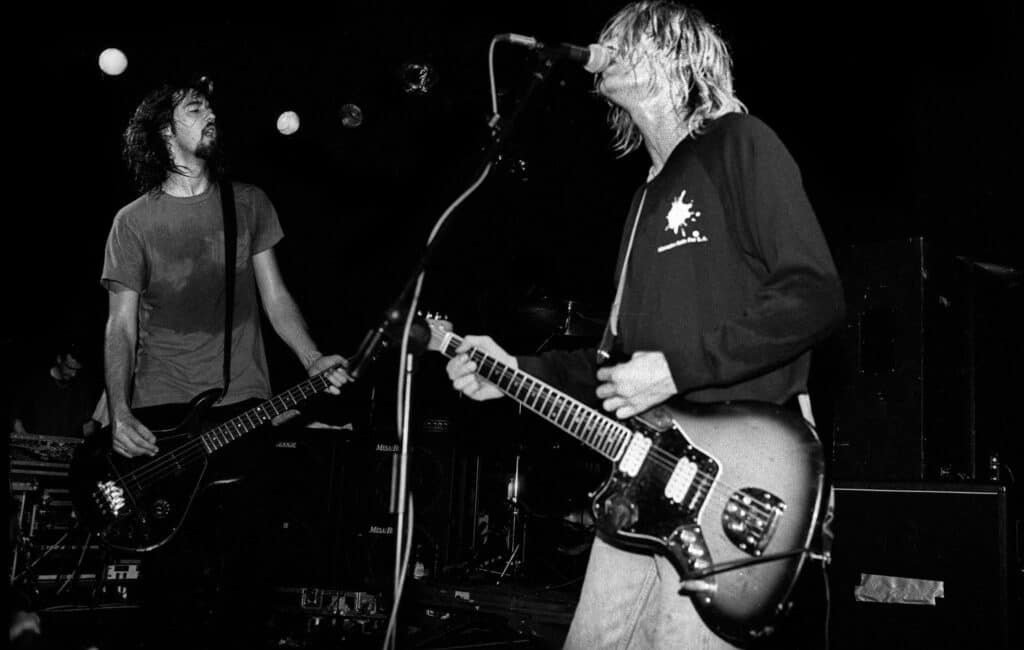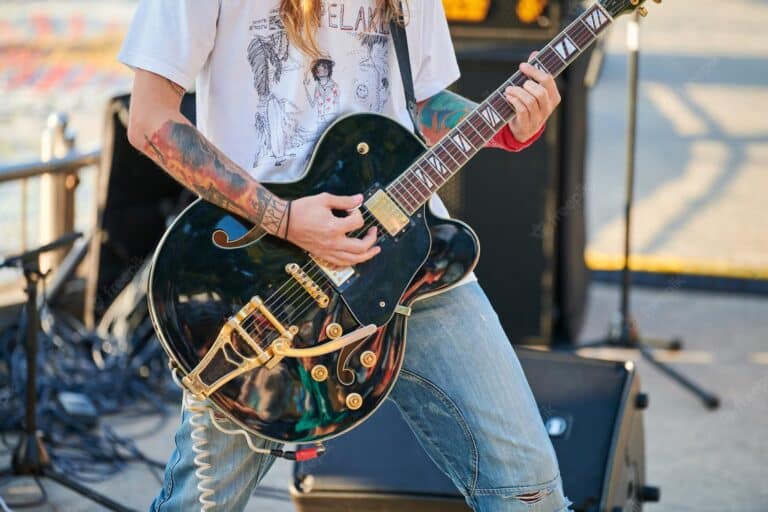Last Updated on December 23, 2022 by IDS Team
The 90s grunge scene of Seattle originally became popular amongst those who felt misunderstood and hard done by. These same qualities mean it has continued to resonate worldwide from South America to the UK. Read on to find out how to achieve the iconic sounds of this musical era.
Double Tracking: At the Heart of the Seattle Grunge Sound
One of the best ways to get that heavy sound of Seattle grunge scene is to double-track your guitar parts. What may surprise you, however, is how some tracks have as many as four different guitars. These overlap each other to create a whole new sound.
One example is Nirvana’s Smells Like Teen Spirit. In this record, legendary producer Butch Vig panned the two heaviest tracks to the left and right. He then topped these with other tracks with varying levels of FX. Legend has it Kurt Cobain took a lot of convincing to accept double tracking – he claimed it messed with the band’s underground sound.

What this style of double tracking does is blend sound like mixing paint. In this way, you can achieve sounds different to just your basic amp settings. You might not have access to the same FX as Vig. However, by using what you do have creatively, you can achieve a similar complexity to your heavy guitar parts.
Power Chords: How to Get as Heavy as You Like
One feature of grunge which also became used by punk, pop punk and post-punk, is the power chord. The power chord is neither major nor minor. It omits the third note of the scale, leaving only the first and the fifth. This neither major nor minor quality allows grunge to maintain that haunting, eerie sound. It also allows it to sit in a nice in-between spot as a genre. It carries a lot of sadness, but was also intended to be energetic, encouraging fans to mosh and headbang.
However, using power chords won’t immediately make you sound grunge. In fact, there are many grunge tracks which don’t use them, and plenty of punk, rock, and post-punk tracks which do. However, if you’re unsure where to start, sticking to power chords can help. Play at the low end of the guitar neck, add some gritty distortion, and you can get a great sound to start. For a real grunge sound, try syncopating them. By muting some of your strums, you can write riffs similar to ’Smells Like Teen Spirit’, ‘Fell on Black Days’ by Soundgarden, or any track by Alice in Chains.
The Seattle Grunge Sound’s Secret Weapon: Be Messy
Grunge never tried to be perfect. As an underground genre, it shied away from the polish of large studios and the mainstream industry. In fact, Kurt Cobain actually asked producer Steve Albini to help him make the sound of In Utero, the band’s third album, dirtier, messier, and less commercial. You can notice this especially on tracks like Serve the Servants, which used seventh chords layered with tons of distortion. Occasionally, choosing more complex chords which don’t sound nice under distortion can give your playing a dirtier, grungier sound.
Alice in Chains were also masters of messy riffs and production. When they and other bands went unplugged, this ramshackle approach saw grunge become closer to folk. Whether electric or acoustic, embracing your natural messiness as a guitarist brings an underground authenticity to your playing. Just remember that moderation is also key!
Grunge Tip Number 4: Avoid Too Many FX
Because grunge was underground, bands didn’t always have huge pedalboards. Grunge bands tended not to use fuzz, wah, flanger, or other effects as much as some other genres.. Doing less with more is a key hallmark of grunge.
To achieve this, try limiting yourself to just a couple of distortion or overdrive pedals and your amp. Don’t be concerned with sounding pretty, but instead focus on expression and atmosphere. Contrast and dynamics, as explained in the next point, also help you do less with more.
Loud-Quiet Dynamics – the Key to Distinctive Seattle Grunge Inspiration
The original Seattle grunge bands often switched from loud to very quiet and vice versa. This meant when the chorus kicked in, it was most impactful. This technique was chiefly utilised by Nirvana. However, it also features in the music of Soundgarden, Mudhoney, Alice in Chains, as well as the Foo Fighters, although they came after the main scene.
To achieve this, it’s not enough to just turn down the volume or lessen the FX when producing. It all starts in the writing process. Use a sparse, minimal riff in the verse sections with clean or almost clean guitar. Meanwhile, crank the distortion up to eleven in the choruses. This will provide you with the contrast you need to grab your listeners’ attention.
Shake Up Your Music Theory: How to Have a Truly Underground Sound
One lesser-known way of getting that grunge “Seattle sound” is by changing the way you write. Due to its underground values, grunge music really didn’t care much for proper music theory. One favourite technique of Kurt Cobain was to change the second chord of the key. This chord normally should be minor, but Nirvana often made it major. This is unexpected, and not what listeners expect to hear. Therefore, it is responsible for the slightly tense, haunting quality of tracks off Nevermind and In Utero.
Other bands such as Alice in Chains also avoided theory conventions. For example, many bands kept the fifth chord out of the chorus. This prevented the songs from sounding too happy or like they ever reached a climax. Using these conventions can help prevent your sound becoming too mainstream.
Final Thoughts
These are just some of the ways you can achieve the Seattle Sound or something close to it. Remember that grunge was an underground, do-it-yourself genre with a reputation for going against convention, so there are no rules. However, these tips should help you narrow down your techniques to achieve the sound you’re looking for.
Liked this article? For more ways to think about music differently, check out the rest of our tutorials section here.



